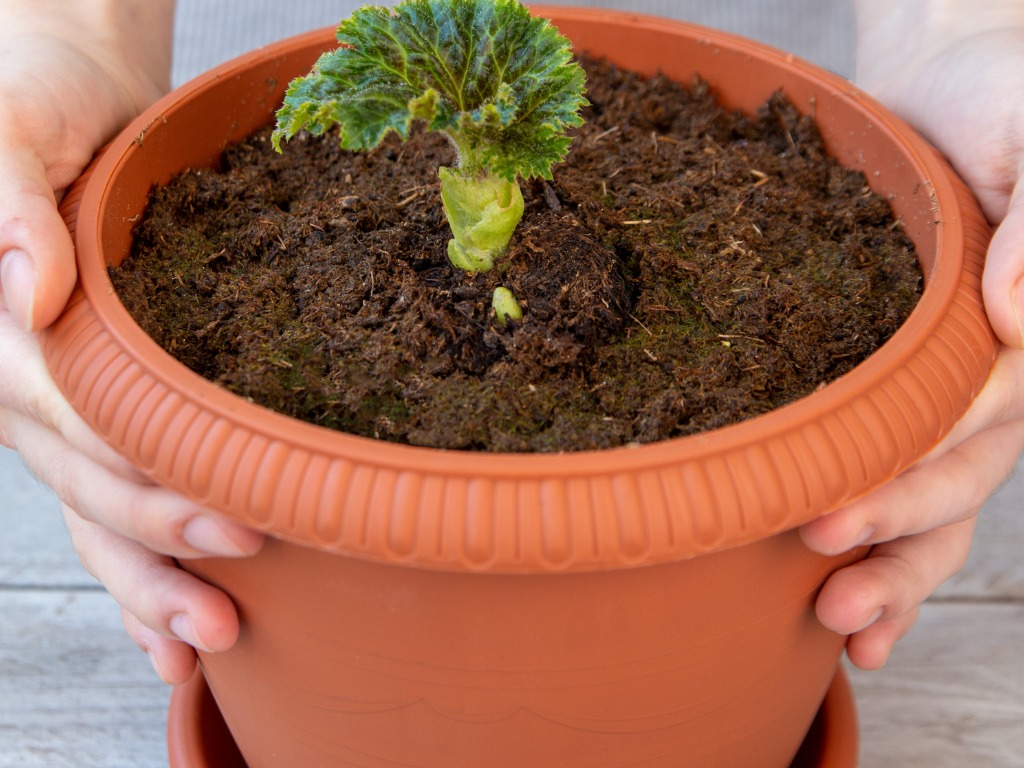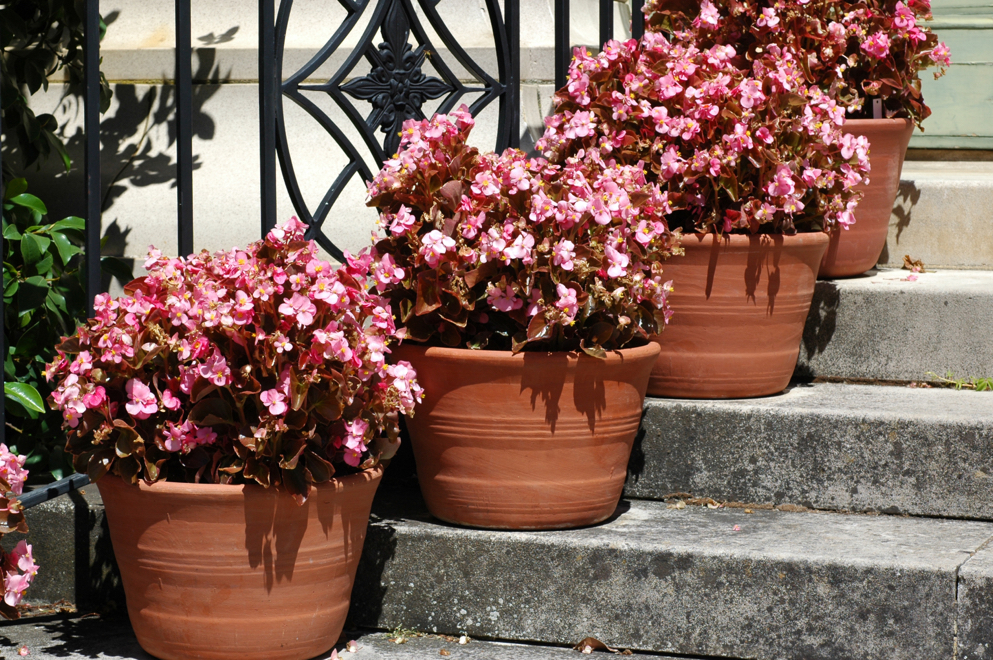Growing Begonias In Pots? Follow These 5 Essential Rules To Avoid Going Wrong

ANNUALS > BEGONIA > CONTAINERS

Elizabeth is a Permaculture Garden Designer, Sustainability Consultant and Professional Writer, working as an advocate for positive change. She graduated from the University of St. Andrews with an MA in English and Philosophy and obtained a Diploma in Applied Permaculture Design from the Permaculture Association.
Reviewed By DAN ORI

Dan has over 27 years’ under his belt caring for plants and gardens. Working as a Horticultural Instructor and Consultant, he draws on a diverse range of experience that includes working as a Head Gardener, Tree Surgeon, Garden Centre Trouble Shooter, and writer of academic papers. Dan has a Level 3 Diploma in Horticulture and is currently a candidate for the RHS’s most prestigious award – The Master of Horticulture.
Contributions From JANEEN RANDLE

Janeen Randle is the president of the Melbourne Begonia Society. The society is based in Australia and many members, including Janeen, breed their own Begonias and visit flower shows across the country.
IN THIS GUIDE
BEGONIA GUIDES
Container Growing
Deadheading
Feeding
Hanging Baskets
Leggy
Overwintering
Problems
Propagation
Re-Potting
Starting Tubers
Varieties
Some begonias are ideal for growing outdoors in summer, while others make great houseplants year-round.
If you are thinking about growing begonias, you might be wondering whether they make good container plants.
Can You Grow Begonia In Pots?
The good news is, when growing indoors and in a garden, begonias are often an excellent choice for container growing.
There is a wide range of different types of begonias and a staggering array of cultivars, which work very well in pots.

Tuberous begonias are a great choice for pots placed outdoors in the summer, and fibrous-rooted begonias can also be grown as annuals outdoors in pots or other containers over the summer months.
There are also several different types of begonias ideally suited to growing in pots indoors.
1) Choose A Pot At Least 40cm Wide
When choosing a container for begonias, remember that it should allow water to drain away freely at the base, as these are not plants which like waterlogged conditions.
With this in mind, there are a wide variety of different containers that you could choose from.

It is worth considering the eco-friendly and affordable option of using reclaimed items or materials to make new planters for your garden.
While individual plants can often be placed in smaller containers, choosing a container at least 40cm across will usually make for impressive displays.
“Use a pot that is only slightly larger than the root ball,” says Janeen Randle, the President of the Melbourne Begonia Society.
“Make sure to sterilise the pot before planting.”
2) Use A Free Draining Potting Mix
Begonias like fertile and free-draining conditions.
Any peat-free multi-purpose compost will generally be fine.
Mulching around the top of containers with homemade compost, leaf mould or other organic mulch will help retain fertility and moisture.
“I use an open mix for my begonias,” explains Janeen.

“My mix contains a good potting medium, perlite, pumice, small orchid bark for drainage and a sprinkle of slow-release fertiliser.”
3) Space Plants Or Tubers Equally
When potting up begonias, you will typically either be dealing with tubers, which should ideally be placed first into small individual pots, or, more commonly, with young plants.
Space these equally around the container, being sure to bear their growth habits and eventual size in mind.
Remember that there are begonias with trailing or cascading and more upright forms.
4) Only Plant A Few Per Pot
Typically, 3-4 begonias will create a full and lush display in a container 40cm across.

However, there is plenty of flexibility in this and you may plant fewer.
This is especially true when you grow a more vigorous cultivar or plan to include other flowering or foliage plants in your summer display.
5) Provide Suitable Growing Conditions

- Place containers in full sun or partial shade (depending on which type you are growing and the conditions where you live).
- Water well throughout the growing season, trying to make sure water reaches the roots and does not wet the foliage and flowers. However, do not overwater and make sure excess water can drain away freely.
- Feed your begonias with a potassium-rich liquid feed every 4-6 weeks during the summer.
- Fibrous-rooted types are generally treated as annuals, but with tuberous types, you may wish to lift the tubers in early autumn, before the first frosts, and store these in a frost-free location so that you can enjoy them over subsequent years.
“It is rare to see fibrous-rooted begonias used in indoor containers but I strongly recommend trying them indoors,” shares Master Horticulturist Dan Ori.
“When fibrous-rooted begonias were first introduced to the UK, they were grown as houseplants.
“After the frosts have passed in spring, I start with a young plant grown from cuttings or seed and plant them outside in beds or small potted arrangements.
“Just before the first frosts hit in autumn, I dig out all the plants and take cuttings for next year and with any good quality plants, I pot them up and use them as houseplants.
“However, when spring comes around again, I plant the indoor plant back into containers outside to fill beds and planted arrangements.”
